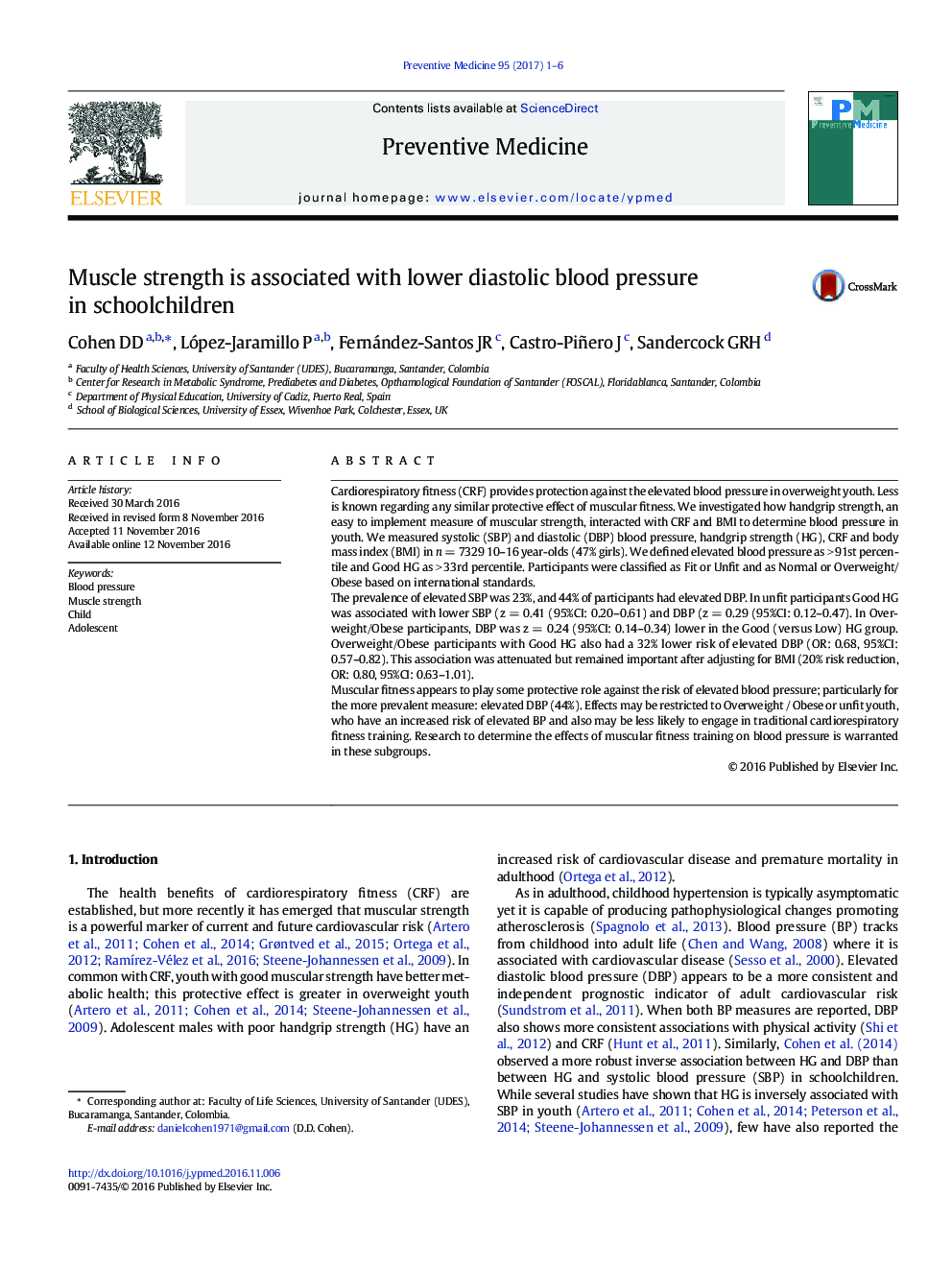| کد مقاله | کد نشریه | سال انتشار | مقاله انگلیسی | نسخه تمام متن |
|---|---|---|---|---|
| 5635808 | 1581619 | 2017 | 6 صفحه PDF | دانلود رایگان |
- The prevalence of elevated systolic blood pressure (SBP) was 23% in 10-16Â year old schoolchildren.
- The prevalence of elevated diastolic blood pressure (DBP) was higher still at 44%.
- Muscular strength was associated with lower SBP but more so with DBP.
- Associations were strongest in overweight and those with poor cardiorespiratory fitness.
Cardiorespiratory fitness (CRF) provides protection against the elevated blood pressure in overweight youth. Less is known regarding any similar protective effect of muscular fitness. We investigated how handgrip strength, an easy to implement measure of muscular strength, interacted with CRF and BMI to determine blood pressure in youth. We measured systolic (SBP) and diastolic (DBP) blood pressure, handgrip strength (HG), CRF and body mass index (BMI) in n = 7329 10-16 year-olds (47% girls). We defined elevated blood pressure as > 91st percentile and Good HG as > 33rd percentile. Participants were classified as Fit or Unfit and as Normal or Overweight/Obese based on international standards.The prevalence of elevated SBP was 23%, and 44% of participants had elevated DBP. In unfit participants Good HG was associated with lower SBP (z = 0.41 (95%CI: 0.20-0.61) and DBP (z = 0.29 (95%CI: 0.12-0.47). In Overweight/Obese participants, DBP was z = 0.24 (95%CI: 0.14-0.34) lower in the Good (versus Low) HG group. Overweight/Obese participants with Good HG also had a 32% lower risk of elevated DBP (OR: 0.68, 95%CI: 0.57-0.82). This association was attenuated but remained important after adjusting for BMI (20% risk reduction, OR: 0.80, 95%CI: 0.63-1.01).Muscular fitness appears to play some protective role against the risk of elevated blood pressure; particularly for the more prevalent measure: elevated DBP (44%). Effects may be restricted to Overweight / Obese or unfit youth, who have an increased risk of elevated BP and also may be less likely to engage in traditional cardiorespiratory fitness training. Research to determine the effects of muscular fitness training on blood pressure is warranted in these subgroups.
Journal: Preventive Medicine - Volume 95, February 2017, Pages 1-6
